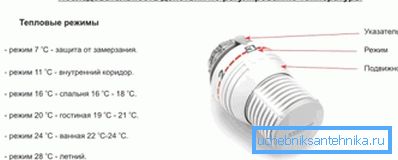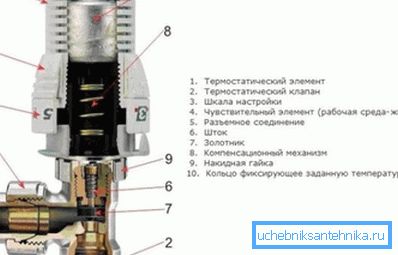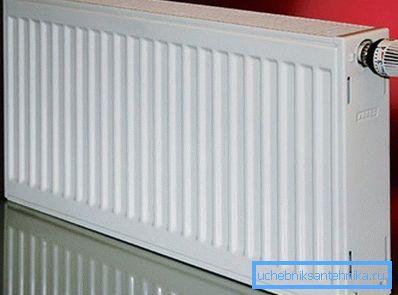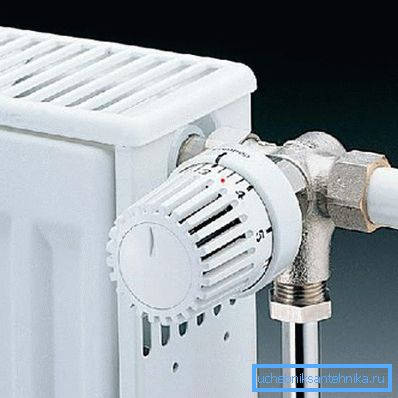Balancing heating valve and its features
The ability to adjust the temperature of the heaters is a very important point, as it allows to achieve the most comfortable conditions in the room. In water systems, balancing valves are responsible for adjusting the temperature of radiators. Below we look at what these devices are and how they work.

Why do I need a balancing tap
Balancing cranes are an advantageous solution for a number of reasons listed below:
- They allow you to control the temperature of the batteries individually, rather than the total in the room, thanks to which you can fine-tune the optimum temperature background.
- They help prevent overheating of the air in the room, which can occur when the room is heated by the sun. As a rule, sensors of a centralized system cannot track this situation.
- Provide the ability to adjust the temperature mode separately for each room. For example, if a room is practically not used, you can set the minimum water consumption in the radiators, which will provide some energy savings.
For these reasons, more recently, balancing cocks are increasingly used in radiators.

Features of balancing cranes
Regulator device
First of all we will consider the device and the principle of operation of the balancing crane. So, this mechanism is a shutoff valve, which is installed at the entrance to the heating devices.

Adjusting the position of the stem, blocking the bore, is carried out by pressing on it a thermostatic valve (a small container with liquid or gas, which has a large coefficient of thermal expansion).
To return the rod to the reverse position, the spring is installed. Adjusting the degree of opening of the bore hole is carried out by a compensation mechanism having a scale.
Principle of operation
Adjust the temperature of the heater as follows:
- The fluid in the tank with the valve (bellows) is heated - the higher the temperature, the more bellows becomes. As a result, it presses on the rod and thereby reduces the flow of water into the battery.
- Using a drum with a scale, you can adjust the degree of initial elongation of the bellows in contact with the rod. Thus, the temperature is set, above which the device blocks the flow of water to the radiator.
- After reducing water consumption, the heat from the batteries is reduced, causing the indoor air to cool. The temperature in the bellows also decreases, and it ceases to press on the rod, which, under the influence of the return spring, rises to the upper position and thereby opens the through hole.

As a result, as we see, we get a vicious circle, as a result of which the device allows to maintain the heating in the room within the specified temperature.
Note! Some models of radiators are sold with balancing valves installed on them. In this case, you will not have to install them yourself, however, the price of such devices is higher.

Installation Features
First of all, it should be said that installing a balancing regulator with your own hands is nothing complicated.
The only thing you need to familiarize yourself with some of the features of its installation, which are listed below:
- The regulator crashes into the heating radiator at the inlet, not the outlet.
- The diameter of the bore should match the diameter of the supply pipes.
- If several radiators are installed in a room in series, then there is no need to use controllers separately for each heater. You can simply control the flow of coolant at the input of the first battery. If the house heating system is single-pipe or each radiator is connected to a separate riser, then a separate balancing is required for each heater.
- When installing a crane, its head, in which the bellows is located, must be placed horizontally, otherwise stagnant zones may appear around it.

- The head of the heating temperature regulator should be blown from the room, but not from the pipes.
- In order for the adjustment to work correctly, it is necessary to ensure that the head of the device does not fall under direct sunlight.
Note! Crane head can not be closed with curtains or other decorative elements. Otherwise, the regulator will not work properly.
Here, in fact, all the main points that you need to know when installing these regulators. Detailed installation instructions are included for each device.
Note! Many people to adjust the heating radiators install valves inlet and outlet. However, this option does not allow for full adjustment, as can the device in question.
Conclusion
Balancing taps allow you to maintain the heating of the room in the aisles of a given temperature, as well as save energy. Due to this, it is possible to provide the most comfortable living conditions in the heating period with lower financial costs. Install such a device independently under the force of every home craftsman, the only thing you need to follow the above rules.
From the video in this article, you can pick up some additional information on the designated topic.